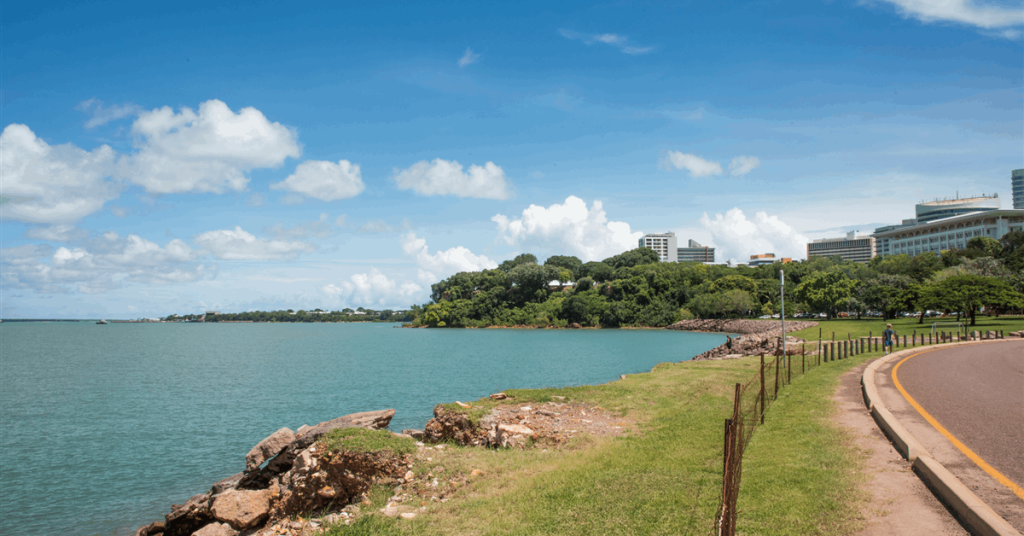Advanced geological analysis has increased prospective oil and gas resource estimates for the AC/P70 license in the Timor Sea off northwestern Australia, 100 percent owner Melbana Energy Ltd said.
Prospective gas resources in the unrisked best estimate scenario have risen 3.7 percent from 2.75 trillion cubic feet (Tcf) to 2.86 Tcf while unrisked best-estimate prospective oil resources have increased 81 percent from 43 million barrels to 78 million barrels, the Sydney-based company said in a stock filing.
The prospective oil and gas resources come from a combination of structures deeper than and adjacent to the Swan and Vesta fields, Melbana said.
Unrisked best-estimate contingent resources, within the two undeveloped fields, remain unchanged at 276 billion cubic feet (Bcf) and 34 million barrels.
“Our original exploration thesis for AC/P70 was to follow up on the historical oil discoveries at the Vesta and Swan fields and explore for oil”, said Melbana exploration manager Duncan Lockhart. “Our proprietary reprocessing of the publicly available 3D seismic resulted in a significant improvement in data quality, which allowed us to increase the volumetric estimates of the Plover Formation at the Vesta location.
“This same technology was used to upgrade the Hadrosaurus lead to prospect status and significantly increase our estimate of the volume of oil that may be present in the license area.
“This work reinforces our license area as being highly prospective for LNG-scale accumulations of gas with multiple oil prospects, all located relatively close to existing infrastructure”.
The Permian-age portion of East Swan Deep is the biggest of the gas prospects identified in the permit with 1.23 Tcf in the unrisked best estimate scenario. The mean unrisked best-estimate prospective resources stand at 1.4 Tcf. East Swan Deep has a 24 percent geological chance of success.
The Triassic portion of East Swan Deep has unrisked best-estimate prospective gas resources of 569 Bcf and mean unrisked best-estimate prospective gas resources of 702 Bcf. The prospect has an 18 percent geological chance of success.
However, Swan North-West is the gas prospect with the highest geological chance of success at 44 percent. It has unrisked best-estimate prospective gas resources of 196 Bcf and mean unrisked best-estimate prospective gas resources of 198 Bcf.
The biggest oil prospect in the permit, Vesta North, has unrisked best-estimate prospective resources of 195 million barrels and mean unrisked best-estimate prospective resources of 200 million barrels. Vesta North has a 42 percent geological chance of success.
The other oil prospect, Hadrosaurus, has unrisked best-estimate prospective resources of 35 million barrels and mean unrisked best-estimate prospective resources of 41 million barrels. It has a 24 percent geological chance of success.
“The permit is adjacent to multiple oil discoveries and production including the Challis, Jabiru, Skua, Puffin and Cassini oilfields”, Melbana noted.
“The Darwin LNG Plant and export facility is directly accessible via proximate pipeline infrastructure, and exploration well is not required until 2027, allowing ample time to select a high-potential drilling target”.
“Melbana has engaged an advisor to assist it with farming out some of its 100 percent interest in the permit to a suitably qualified partner in return for an upfront cash contribution to back costs and funding the forward technical work program, which includes one exploration well”, it said, targeting to conclude a deal by year-end.
To contact the author, email jov.onsat@rigzone.com
Generated by readers, the comments included herein do not reflect the views and opinions of Rigzone. All comments are subject to editorial review. Off-topic, inappropriate or insulting comments will be removed.
element
var scriptTag = document.createElement(‘script’);
scriptTag.src = url;
scriptTag.async = true;
scriptTag.onload = implementationCode;
scriptTag.onreadystatechange = implementationCode;
location.appendChild(scriptTag);
};
var div = document.getElementById(‘rigzonelogo’);
div.innerHTML += ” +
‘‘ +
”;
var initJobSearch = function () {
//console.log(“call back”);
}
var addMetaPixel = function () {
if (-1 > -1 || -1 > -1) {
/*Meta Pixel Code*/
!function(f,b,e,v,n,t,s)
{if(f.fbq)return;n=f.fbq=function(){n.callMethod?
n.callMethod.apply(n,arguments):n.queue.push(arguments)};
if(!f._fbq)f._fbq=n;n.push=n;n.loaded=!0;n.version=’2.0′;
n.queue=[];t=b.createElement(e);t.async=!0;
t.src=v;s=b.getElementsByTagName(e)[0];
s.parentNode.insertBefore(t,s)}(window, document,’script’,
‘https://connect.facebook.net/en_US/fbevents.js’);
fbq(‘init’, ‘1517407191885185’);
fbq(‘track’, ‘PageView’);
/*End Meta Pixel Code*/
} else if (0 > -1 && 93 > -1)
{
/*Meta Pixel Code*/
!function(f,b,e,v,n,t,s)
{if(f.fbq)return;n=f.fbq=function(){n.callMethod?
n.callMethod.apply(n,arguments):n.queue.push(arguments)};
if(!f._fbq)f._fbq=n;n.push=n;n.loaded=!0;n.version=’2.0′;
n.queue=[];t=b.createElement(e);t.async=!0;
t.src=v;s=b.getElementsByTagName(e)[0];
s.parentNode.insertBefore(t,s)}(window, document,’script’,
‘https://connect.facebook.net/en_US/fbevents.js’);
fbq(‘init’, ‘1517407191885185’);
fbq(‘track’, ‘PageView’);
/*End Meta Pixel Code*/
}
}
// function gtmFunctionForLayout()
// {
//loadJS(“https://www.googletagmanager.com/gtag/js?id=G-K6ZDLWV6VX”, initJobSearch, document.body);
//}
// window.onload = (e => {
// setTimeout(
// function () {
// document.addEventListener(“DOMContentLoaded”, function () {
// // Select all anchor elements with class ‘ui-tabs-anchor’
// const anchors = document.querySelectorAll(‘a .ui-tabs-anchor’);
// // Loop through each anchor and remove the role attribute if it is set to “presentation”
// anchors.forEach(anchor => {
// if (anchor.getAttribute(‘role’) === ‘presentation’) {
// anchor.removeAttribute(‘role’);
// }
// });
// });
// }
// , 200);
//});

